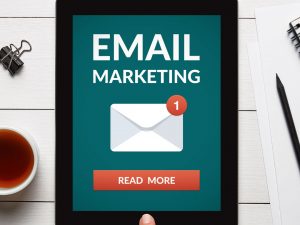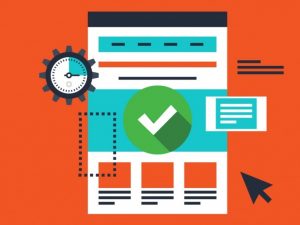
Now that you understand the numbers and other metrics behind email marketing. It’s time to learn what follow-up sequences are.
A follow-up sequence may be the most important aspect of your email marketing strategy and one that is often overlooked and undervalued by small businesses and startups.
Following up after an initial interaction can directly affect how likely someone will purchase from you, return to your store or website, or even refer their friends and family members. So in this chapter, we will explain how to create and manage follow up email campaigns to strengthen customer relationships.
What you’ll learn:
- What a Follow Up Sequence is?
- How to Set Up Follow Up Sequences?
- The Types of Follow-Up Sequences?
- When to Use Follow-Up Sequences?
- How Often Should You Send Follow-Up Emails?
What is a Follow Up Sequence?
A follow-up sequence helps you keep in touch with your leads (potential customers) without spamming their inboxes.
Follow up sequences are prewritten emails sent out after specific tasks on your website or when they perform certain actions on your site. For example, if someone purchases an item from you, then the next day, they’ll receive another email reminding them of that purchase and asking if there’s anything else they want to buy.
These campaigns can also lead to more referrals and greater customer satisfaction. This means that your followers will become your most valuable users, promoting your work on their social media networks and talking about you with their friends and family, all of which will bring new leads into the funnel for you to follow up with again.
How to Set Up Follow Up Sequences?
You will need to sign up for a third-party email marketing service such as Mailchimp. This allows you to create and test out different follow-up sequences and send messages at specific times you schedule.
Once logged in, you should see three tabs: Campaigns, Lists and Templates
The Campaigns tab lets you choose which website or store your campaign applies to, then select whether it’s an initial campaign (to launch your site) or a follow up one (to boost conversion rates). From there, select the tag that shows how many subscribers this campaign will be sent to.
Click “next step” to move on from this page. You’ll now see a preview of what your email might look like with your store’s logo and your custom details. To change the title or text, you’ll need to go into the templates section.
To set up a follow-up email that encourages purchase, click on “create campaign” next to the word “campaigns”. Then select an existing template (these will be prewritten emails sent to subscribers based on different actions they’ve taken).
Next, personalize your message by adding your logo, store name and contact information. According to research, personalized emails have 50% higher open rates. You can even choose when it should be opened! The target date can be in future, so it doesn’t look like you’re spamming them with too many messages at once. Then just click create a Campaign.
Types of Follow-Up Sequences?
There are different types of follow up sequences to choose from. Each one is specific to subscribers’ actions on your website, and you can vary them depending on what works best for your business.
Subscriber opens an email: If a customer opens an email you send, it means they’ve seen at least part of your campaign and may be intrigued by it enough to click through and revisit your site. So we’ll want to remember this. We can do this by adding a special thank you message that pops up once they open our original email (which will only show once).
Click follows link: Whenever someone clicks a link in an email, that’s called engagement! The more engagement there is with your emails, the better it is for your relationship with your subscribers.
If you notice that someone has clicked a link in one of your campaigns, that means they’re interested enough to want more information about the topic. So now is a great time to re-engage them by sending another campaign on that same subject.
Purchase made: When this happens, it’s worth taking advantage of the opportunity at hand. Create a new follow up sequence, so they receive an email soon after their purchase or within two days max. This will remind them how much they love shopping with you and encourage them to buy again soon!
Downloads links: Whenever people download any content from your site, be sure to send another message thanking them for doing so because this implies that they value the information you’ve provided and want to keep receiving similar offers in future.
When to Use Follow-Up Sequences?
Follow-up sequences work best when you send them regularly (or at least on some kind of schedule). You can set up daily, weekly or monthly follow up sequences. It all depends on the size of your list and how regularly people visit and purchase from your website.
It’s best to send follow-up messages to people based on what they’ve done rather than a particular date. If you have a product that takes a long time to produce, you can set up an initial campaign based on when the customer first registers and then create follow up sequences for them as they check out or buy from your website over the course of months.
What Is A Good Follow-Up Sequence Strategy
Keep your follow up sequence under ten emails. This can be difficult, but you want to avoid being overbearing. If someone opens an email and then doesn’t see another one for a month, they might not think your business is reliable.
Sending too many messages at once looks spammy, so keep it under 5 per week or 2 per day if that’s how often you update your website.
Follow up sequences work best when you’re sending them on a schedule (or even better, based on predetermined actions). If you wait too long between each message, the recipient may feel like you’ve abandoned their inbox and no longer trust what you send them in future.
However, this schedule may not work for every company, depending on how often people visit your website.
Key Takeaways
Follow-up sequences are a great way to stay in touch with your audience after you’ve sent them an initial email. This keeps your brand top of mind and can encourage people to buy from you again soon. Here are some key takeaways from this chapter:
- Follow up sequences are a great way to stay in touch on a schedule after someone opens your campaign.
- Keep follow up sequences under ten emails, so you don’t end up spamming your subscribers with too many messages at once
- A good follow-up sequence is based on what the subscriber did, not when they last visited your website or purchased from you.
- Follow up sequences work best when you send them on a schedule (or even better, based on predetermined actions).
- If you send out a follow-up sequence on the same topic every time, only change your subject line and offer.
- Be sure to provide value in each email, so people keep opening and reading what you send them.
- Provide links to helpful information such as articles, case studies, or coupons that enhance your brand’s relationship.
Email marketing can be a powerful way to grow your business, and these tips about follow up sequences will help you get the results you want.
The best part is that this isn’t all you need to know! You’ll learn more effective email marketing techniques in Chapter 6. Stay tuned for more information, and visit DBWebs to find out how to start creating an email campaign today!








